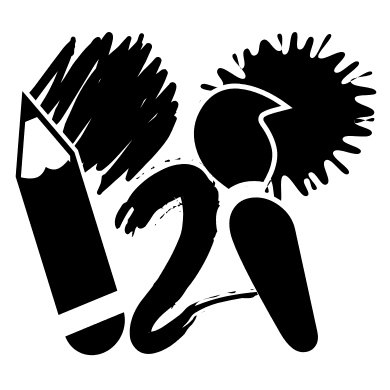
Pixsycho is a big library that aggregates several low/middle level libraries to deal with colors, pixels, raster images, transformations, graphic filters and more. In fact, we can consider Picture to People project was born many years ago through development of some pieces of code to make several pixels manipulations. This code evolved and is part of Pixsycho now.
Pixsycho, the raster part of Picture to People project, is much older than Maccala, the vector based part. Despite the effort on Maccala has been very intensive last years, Pixsycho has much more source code and features. On the other hand, Maccala was born after years of intense study and implementation for Pixsycho, so it's naturally more modern. Since some time ago, some higher level parts of Pixsycho use Maccala API to make complex tasks.
In Picture to People tools you can use here, Maccala action is more subtle than Pixsycho one. Most graphics you can design here are created almost directly by using Pixsycho sub-libraries: when you look at Picture to People, you see what Pixsycho can do. Beside this, there are too much raster transformations, filters, effects, syntheses and renderings to show concerning Pixsycho capabilities. This way, here all these features are just superficially mentioned without example images. In future, maybe a catalog about Pixsycho functionalities can be created.
The guide ideas to produce Pixsycho are the same as for Maccala. To know about these global features you should go here.
Some of the main Pixsycho properties and features are:
- native image format: internally the images are manipulated using its own format, what helps to decrease the process time;
- complex data structures: the low level sub-libraries implement several complex data structures to make things faster or better; some results can not be achieved without them;
- spatial transformations: Pixsycho offers all the more known transformations with anti-aliasing (crop, resize, stretch, flip, mirror, rotate, skew, waving, warping, etc) and several ones not so common;
- gradients: the library has an increasing set of tools to deal with gradients and so;
- mosaics: there are a lot of very useful pieces of code to create mosaics;
- strokes: there is a very generic engine being developed to deal with arbitrary kinds of strokes;
- masks: masks have a proper infrastructure, so they can receive some specific optimizations;
- layers: Pixsycho has a complete and scalable layer engine;
- compositions: using the layer engine and some other tools, it's possible to make many complex compositions;
- dithering: a very powerful and highly configurable dithering library was developed for Pixsycho;
- color spaces and color transformations: Pixsycho has a whole library just to deal with colors and color spaces; it increases the amount of possible filters and transformations;
- vectorization: the vectorization library is very robust nowadays and is used in many high level effects;
- texture synthesis: there is a big texture synthesis library able to tackle some very complex tasks;
- drawing and painting: Pixsycho implements many algorithms to tranform photos in pieces of art.
The features above are just the most common parts of Pixsycho. There is much more.
Leonardo C. de Almeida - P2P developer
